Exhibitions
Discovering Utamaro and Sharaku: Tsutaya’s discerning eyes and the Golden Age of Ukiyoe
2025.07.25(Fri) - 2025.09.09(Tue)
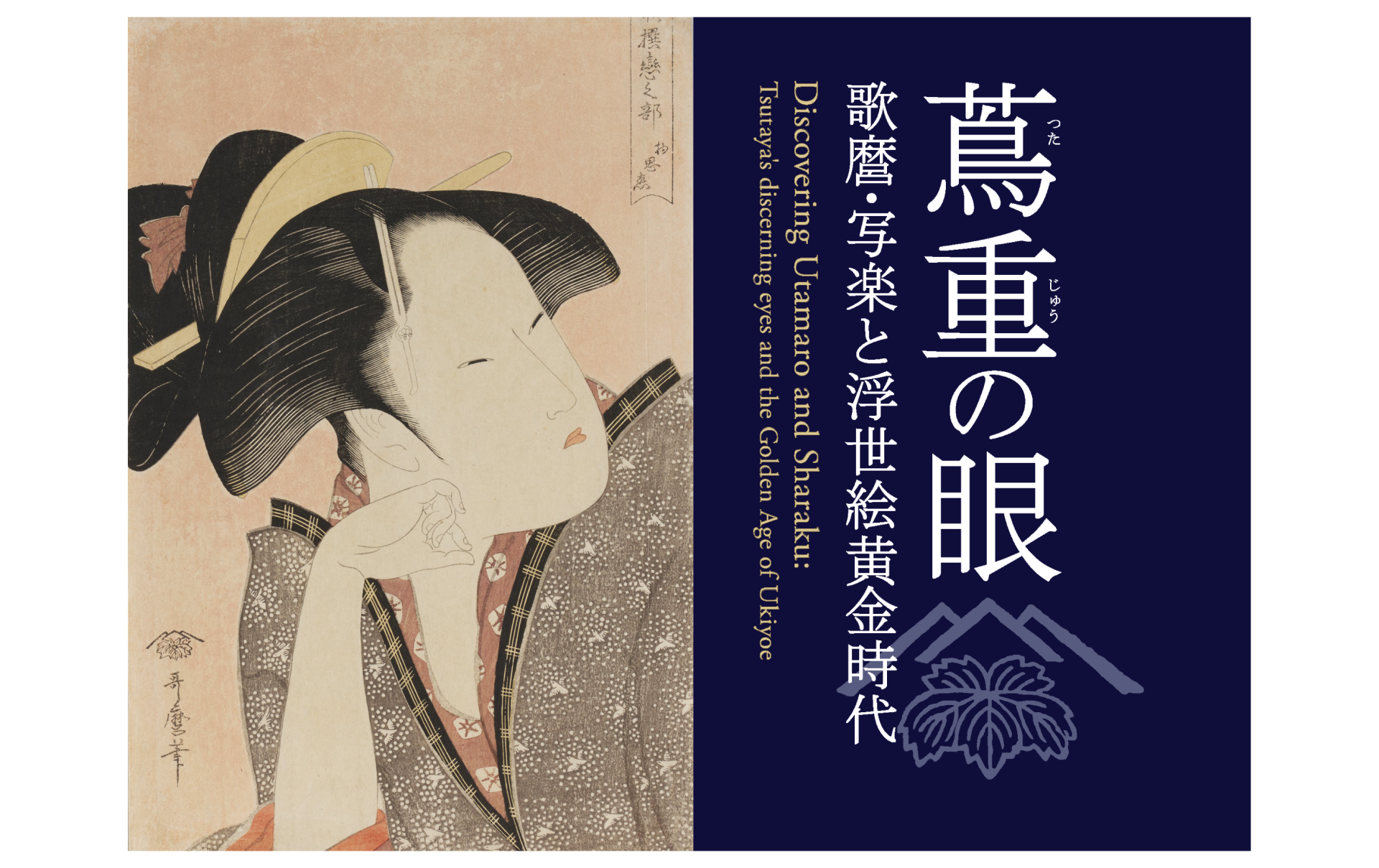
Overview
These big stars in ukiyoe soon establish their iconic styles, such as bijin ōkubie (portraits of women from the chest up) and striking portrayal of kabuki actors, leaving a significant mark on the future ukiyoe culture, and it was Tsutaya who made all this happen.
This exhibition revisits this legendary publisher’s accomplishment through the nishikie and brush-painted bijinga published by his printing house, including Utamaro and Sharaku as well as Chōbunsai Eishi (1756–1829), Utagawa Toyokuni (1769–1825), and Katsushika Hokusai (1760–1849), who developed strong careers under his support. The accompanying photographic portrayals of Tokyo landscapes offer a unique reference point to telescope into the popular culture in Tsutaya’s home ground Edo, a key background to the golden age of ukiyoe.
HIGHLIGHTS
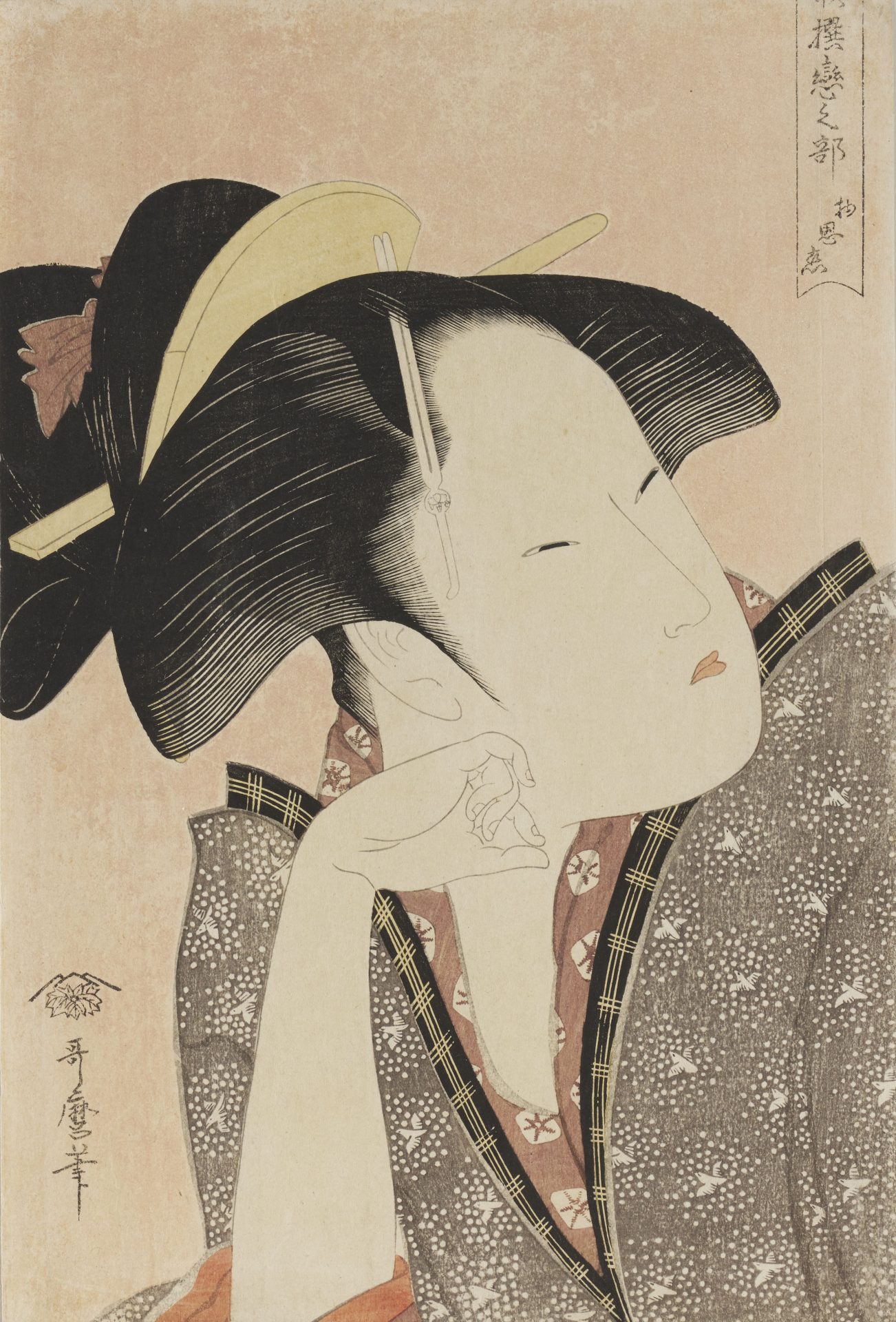
Pensive Love, from the Anthology of Poems: The Love Section, Kitagawa Utamaro, 1793–94, Private collection
The Anthology of Poems: The Love Section is composed of five prints using mica on crimson. Women of different ages and backgrounds are depicted along the theme of love, expressing each sentiment through demeanors and complexions. The middle-aged woman (the eyebrows being shaved off means she is a married woman) in this most celebrated print gazes into an abyss through her narrowed eyes.

Stone Bridge, from the Modern Dancers Series, Kitagawa Utamaro, 1793–94, Private collection
The series portrays talented geishas, and there are five prints known today. The figures are thought to be modeled on courtiers of the Yoshiwara red-light district, making a parody of kabuki stage costumes. This design depicts a woman who imitates the lion dance of a noh play with the peony hair dressing, crimson bandanna, and long dangling hair. This print is the only extant article in the whole world.
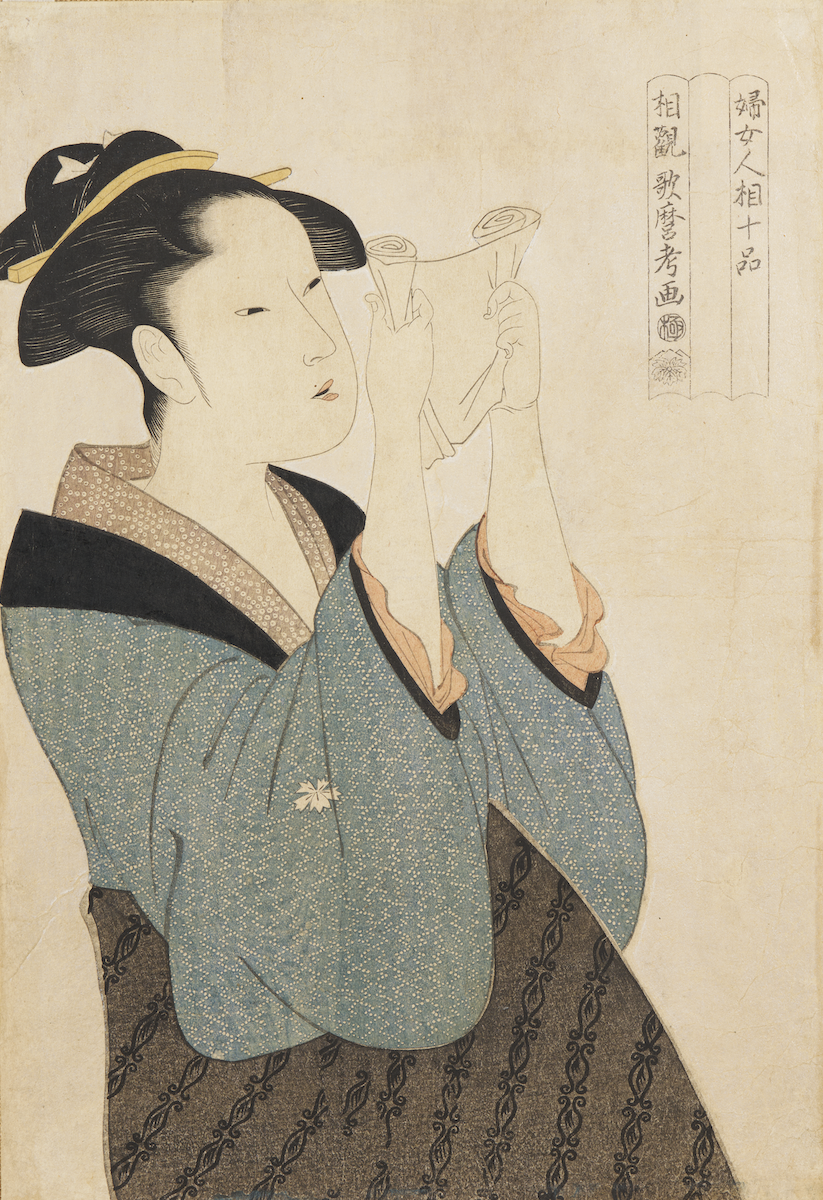
Reading a letter, from Ten Classes of Female Physiognomy, Kitagawa Utamaro, 1792–93, MOA Museum of Art
The motif is a commoner woman reading a letter. The artist’s extraordinary talent in conveying the subject’s emotional development can be seen in her countenance and delicate fingers. Mica is applied to the background.

Ichikawa Ebizō as Takemura Sadanoshin, Tōshūsai Sharaku, 1794, Private collection
One of Sharaku’s masterpieces, the actor is portrayed from a kabuki play premiered in May 1794 at Kawarazaki Theater. Takemura Sadanoshin is a noh actor under the patronage of Load Yurugi. He faces harakiri when the Lord’s daughter was found having an affair with the actor. The design of the print is thought to be taken from either before or after the harakiri scene. Mica is applied to the black background.
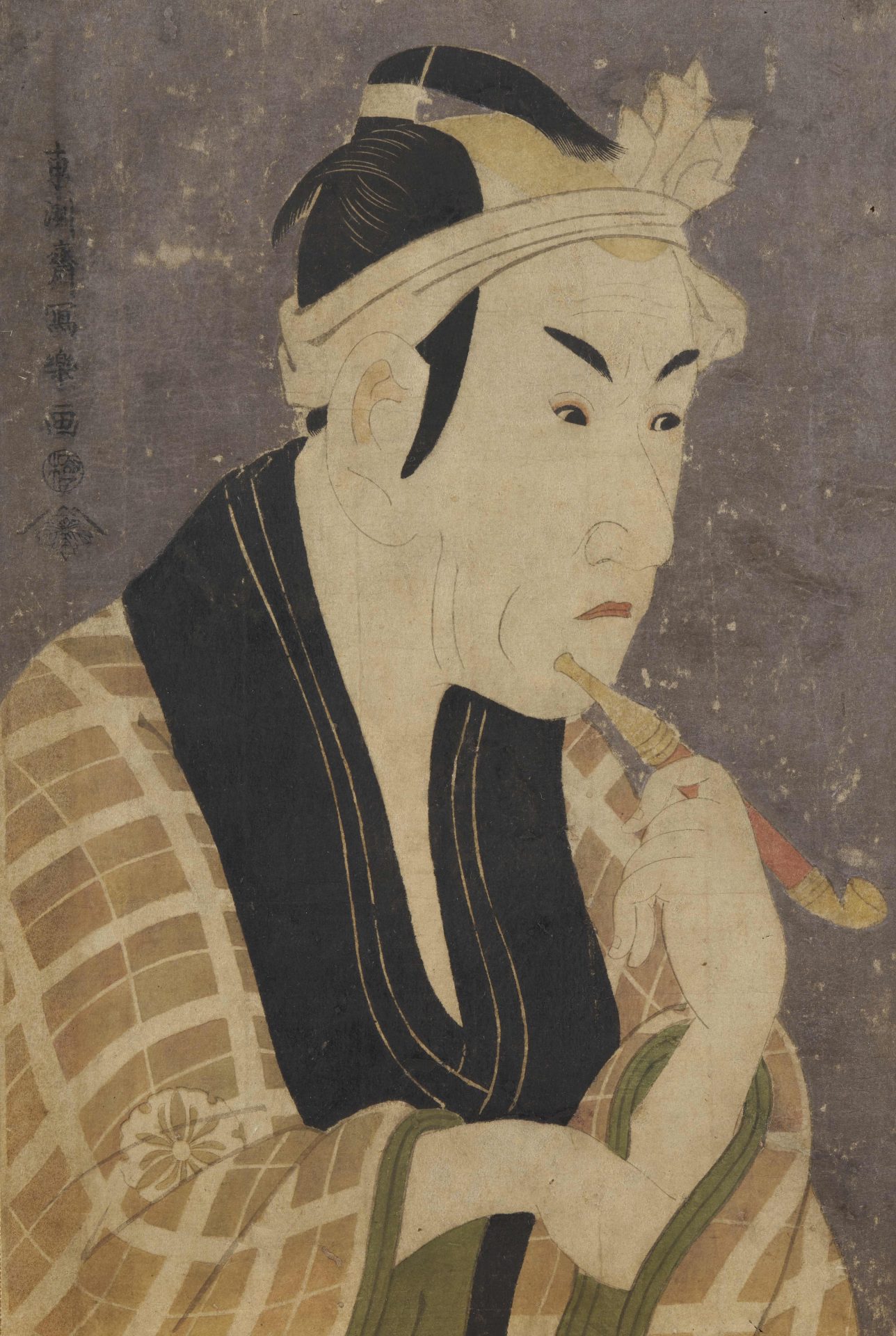
Actor Matsumoto Koshiro IV as Sakanaya Gorobei, Tōshūsai Sharaku, 1794, MOA Museum of Art
Actor Matsumoto Kōshirō IV is depicted as a righteous samurai who helps two vengeful sisters. The motif truthfully expresses the beauty and the air of authority, which this seasoned kabuki actor and choreographic genius was known for.

Actors Ichikawa Yaozō III as Fuwa Hanzaemon and Sakata Hangorō III as Kosodate Kannonbō, Tōshūsai Sharaku, 1794, MOA Museum of Art
The depicted actors are Ichikawa Yaozō III (1747–1818) and Sakata Hangorō III, playing the villains of the spectacle Sanbon-gasa, a production by Miyakoza theater in 1794. A talented dancer, Ichikawa Yaozō III was renowned for his dignified authenticity in acting. He was a son of the actor Sawamura Sōjūrō II
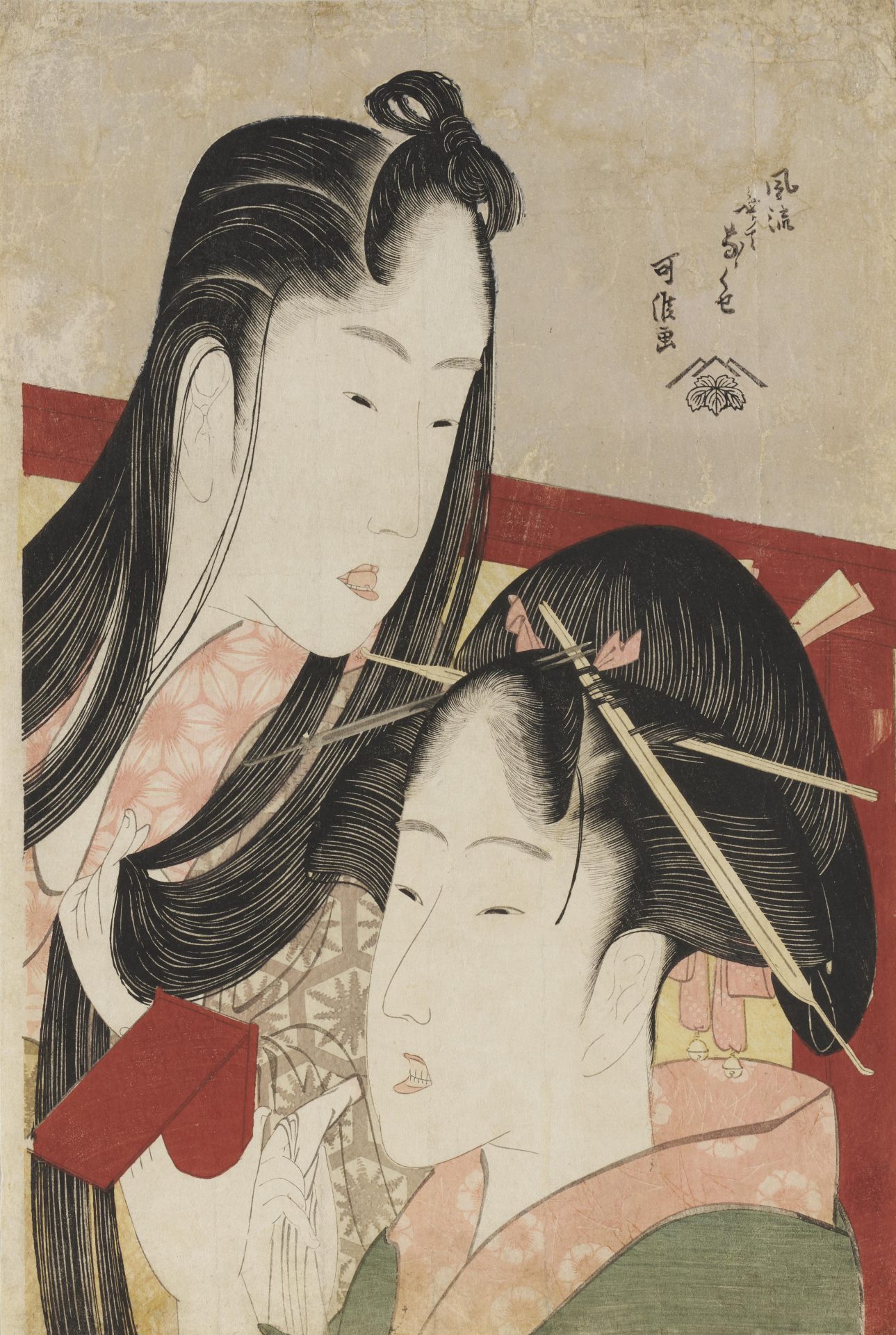
Ground Cherry,, from the series Seven Popular Trends in Satire, Katsushika Hokusai, ca. 1801–1804, printed by Tsutaya Jūzaburō II, Private collection
The original series title refers to the idea that anyone would have at least seven (i.e. many) particular behavioral traits. There are two designs known today from this series. Mica is applied in the background for a sumptuous effect. The red stamp and painting style suggest around 1801 to 04 for its production period. The authorization seal is missing, perhaps due to the ban on ōkubie (close-up portraits) issued in January 1800. The girl in the back has her hair down and is biting a ground cherry while the one in the front looks as if wiping something off her teeth. This excellent ōkubie print by Hokusai has so far only two copies known in the whole world.
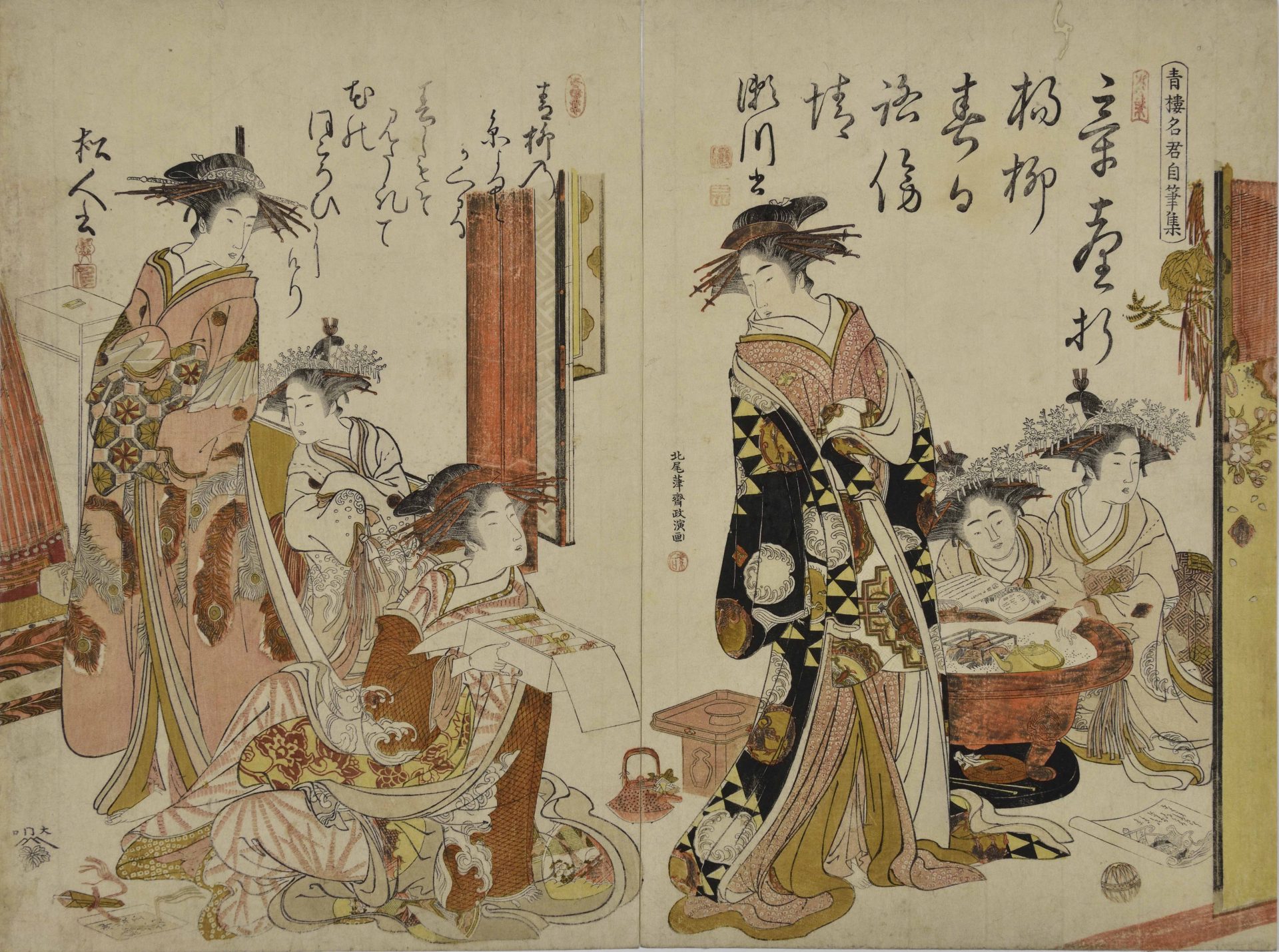
Segawa, from Seirōmeikun Jihitsushū, Kitao Masatora, 1784, Ekoin Temple collection
This series comprises seven designs, of which the above depicts two famous courtesans of the Yoshiwara red-light district, accompanied by their young apprentices. The courtesans’ hand-written (satirical) poems are included at the top. The series is believed to be a celebratory production to mark Tsutaya’s relocation to the prestigious district of Nihonbashi. The bound version of the seven prints was published in the following year. The generous size (double large-size paper) suggests that the publication was partially supported by the courtesan side. This print captures Segawa and Matsundo, two courtesans from the top brothel Matsubaya. It bears the series title, signature by Masatora, and Tsutaya’s official seal, known as one of Masatora’s masterpieces.
